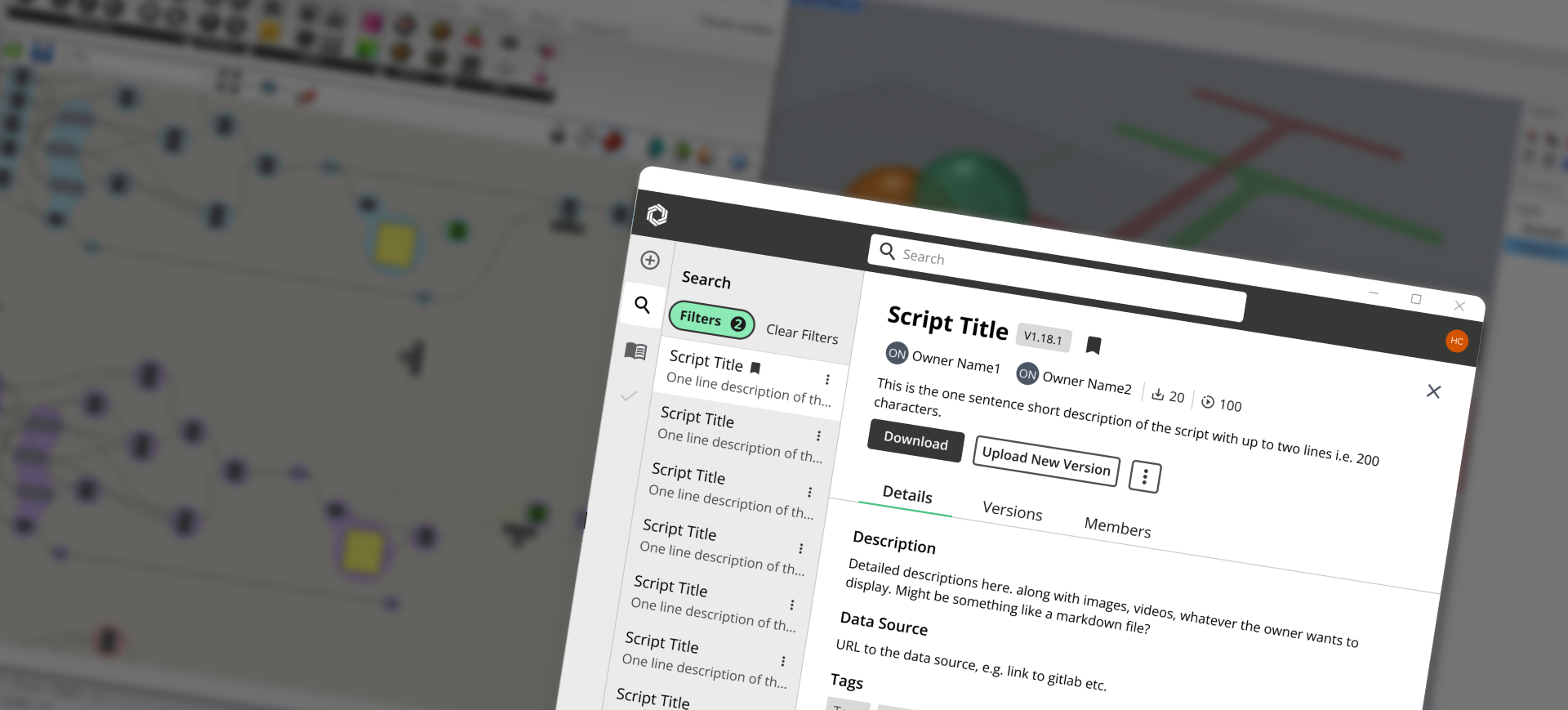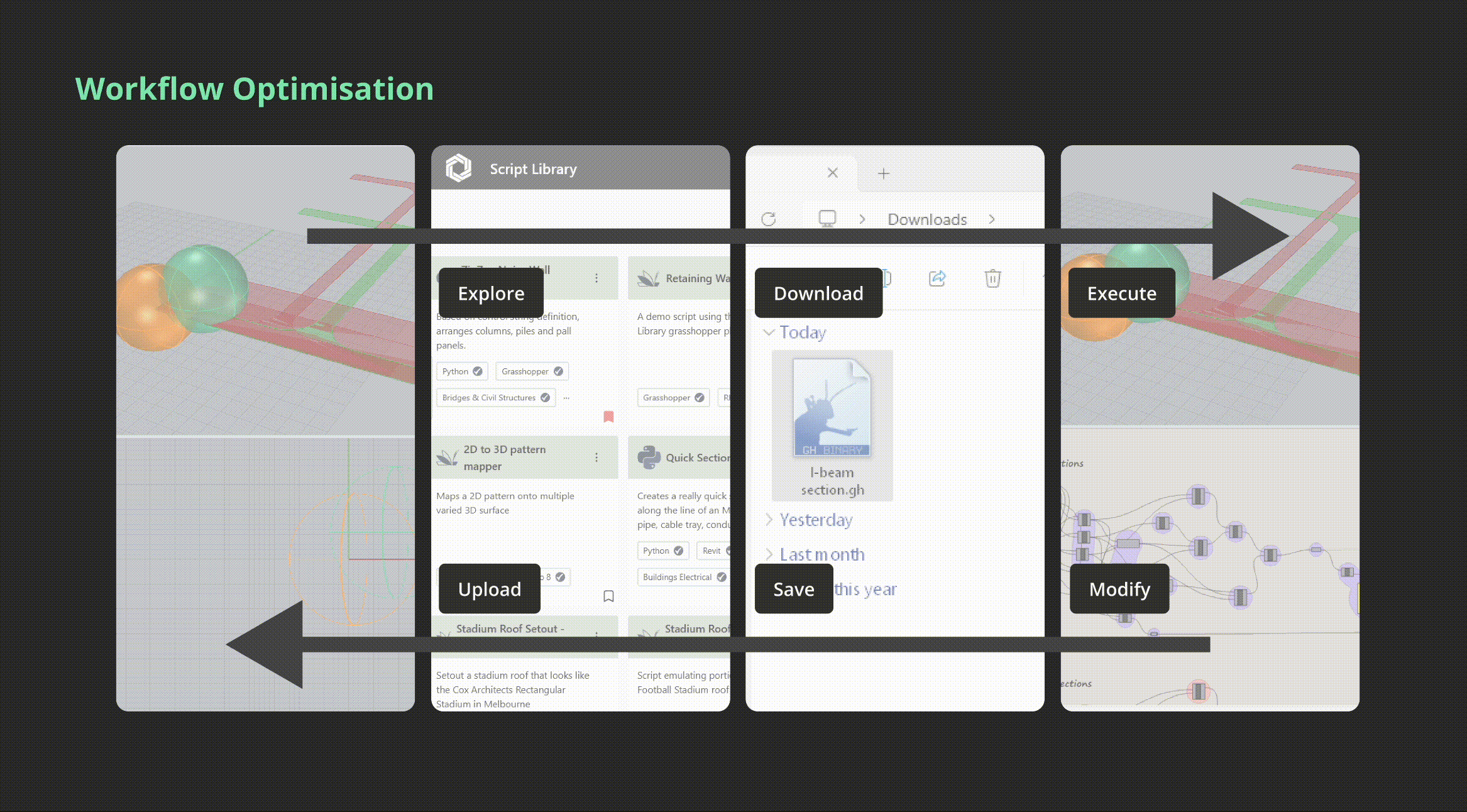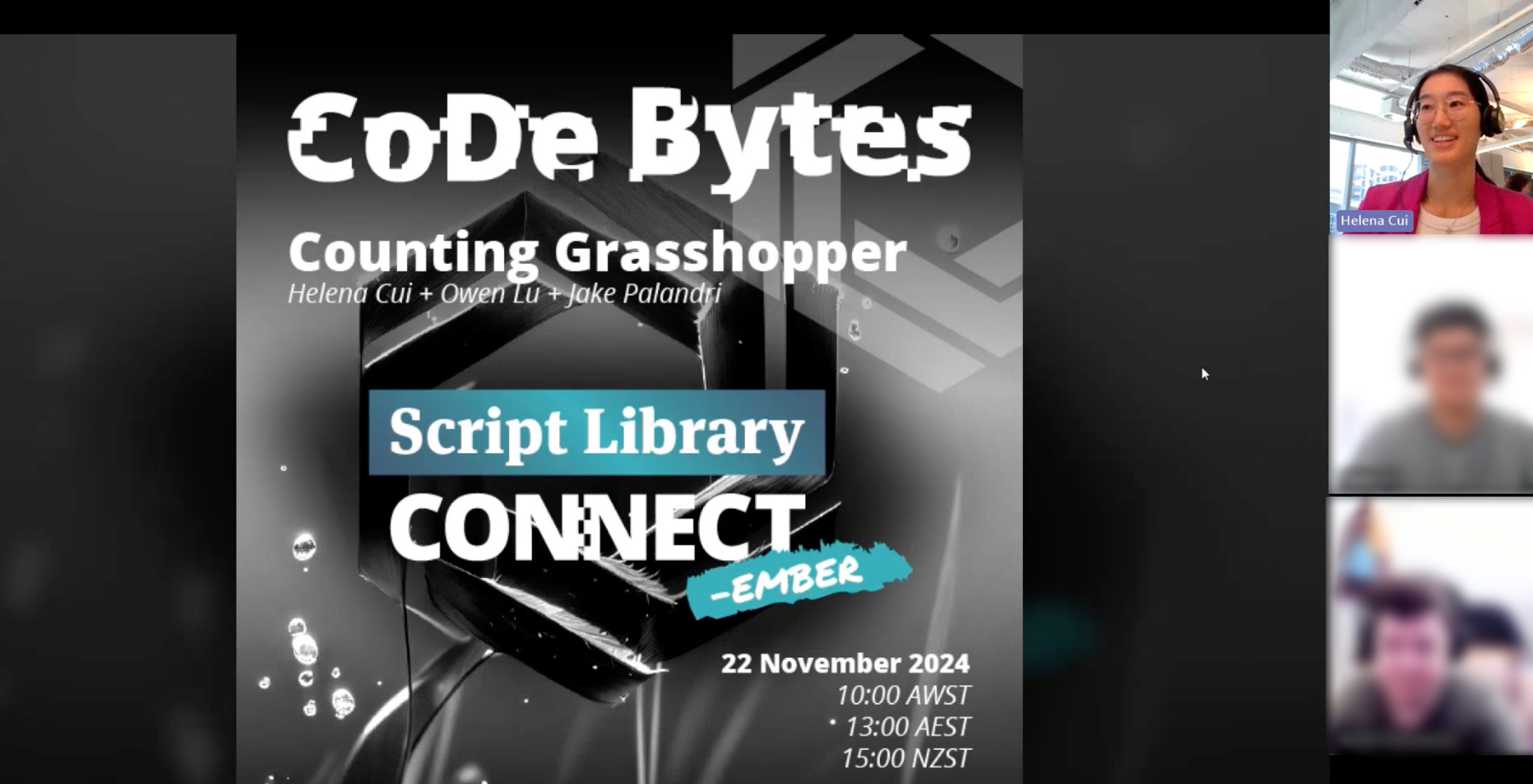Script Library Connect
Script Library Connect (SLC) integrates Aurecon's web-based Script Library into Grasshopper, allowing computational designers to manage scripts seamlessly within their 3D modelling workflow. By integrating script management into their workflow, SLC enhances productivity while providing businesses with actionable insights on automation usage.

Disjointed Workflow Hindering Product Potential
The existing Script Library is a web-based platform for Aurecon to manage and access internal script assets. However, computational designers faced significant workflow disruptions due to the need to frequently switch between the web-based platform and 3D modelling environment, leading to inefficiencies and difficulty in managing script versions and dependencies. This not only hampered individual productivity but also made it challenging to keep track of script versions and dependencies effectively, hindering the potential of the product.
Integrating Script Management into Design Workflows
Our team designed and developed Script Library Connect (SLC), a Grasshopper plugin that integrates
script management directly into the existing 3D modelling workflow to eliminate the disruptions,
simplify workflows, enhance designers 'productivity by streamlining the process of finding,
uploading, and managing script assets, and unlock insights for the business into automation
usage.
The solution focused on a minimalistic UI that preserved the 3D modelling environment 's
clarity
while providing powerful functionality, such as script version tracking, dependency insights, and
direct
execution on the Grasshopper canvas.

Pain Point: Information Overloaded
Through observation and conversations with computational designers, I identified key pain points that shaped the design focus:
- Limited Collaboration: Even thought the features are provided, the platform was primarily used for storing scripts created by individuals, with minimal usage for sharing or collaborative workflows.
- Overloaded Tasks and Information: Users had to manage too many forms of information and perform several small tasks before they could start using a script, disrupting their workflow.
Therefore, we preserved the core information architecture from the web platform for use-flow consistency, and decided to defer script access management features to the beta version due to its lower immediate impact. Instead, we focused on tackling the core design challenge:
How might we embed script management capabilities into Grasshopper’s interface without overwhelming the user or adding unnecessary complexity to an already feature-rich environment?
Designing for Simplicity and Familiarity
Simplify Navigation
:
Inspired by VS Code, a tool that most of the target users are familiar with, I adopted a split
layout
where script entries are organised in a side panel, allowing quick actions, and the detailed
information
is displayed in the main area. This allowed users to switch between multiple script
efficiently.
Enhance Visual Clarity
:
Realising that many users tend to colour code the elements in the existing parametric modelling
tool, I
applied a neutral colour palette to the UI so that it is visually clear and avoid overwhelming
users.
While the project is still within its early stage and there 's no explicit data regarding the
improvement in task completion time, testers have reported feeling the information architecture and
overall UI design is "clear and intuitive ".
Optimisation for Scalability
:
To accommodate the growing number of script entries while maintaining a seamless user experience, I
integrated performance-enhancing features into the design. Lazy loading was introduced to ensure
that
only the scripts in view are loaded, reducing initial page load times and improving responsiveness.
Additionally, an autofill feature was added for uploading new script versions, pre-populating
metadata
fields based on existing entries. This streamlined repetitive tasks, saving users time and reducing
errors.

Usability Testing
Throughout the design and development process, I had frequent informal conversations with potential
users, as well as conducted four usability testing sessions combining both qualitative and
quantitative
feedback methods. The sessions focused on assessing whether users with existing knowledge of Script
Library and Grasshopper could easily recognise available features, complete tasks, and understand
the
information hierarchy.
The process revealed valuable insights across three key areas:
Learn about User Behaviours
Through the testing, I learned about user behaviours around finding, organising, and reusing scripts
while evaluating the usability of key features such as keyword search, filters, bookmarking, and the
script details page.
Uncover Problem
The sessions measured effectiveness (task completion), efficiency (ease of navigation and
interaction),
and satisfaction (user confidence and overall experience). This helped the team to uncover problems,
fixing bugs and improving workflow efficiency.
Explore Opportunities
Additionally, I identified pain points and challenges, such as areas of confusion or hesitation, to
inform further design improvements and enhance the user experience.
Empowering the Product, One Step at a Time
This project significantly improved the efficiency and usability of script management workflows by
integrating Script Library directly into Grasshopper, reducing context switching and streamlining
script
discovery, organisation, and reuse. The intuitive split layout and enhanced features, such as
keyword
search, filters, and bookmarking, empowered users to complete tasks more effectively. Usability
testing
validated the design, with users praising the clear navigation and information hierarchy.
Driving Awareness and Adoption Across the Company
I had the opportunity to present Script Library Connect project to a network of 40+ live
attendees
and a broader audience through recorded sessions. This project demonstrated the importance of
adopting
an agile mindset in design and development. By focusing on iterative improvements and user feedback,
we
delivered a tool that addresses immediate user pain points while laying a foundation for future
enhancements. Script Library Connect is a testament to the power of user-centred design in
transforming
workflows and improving productivity for computational design practice in engineering field.
